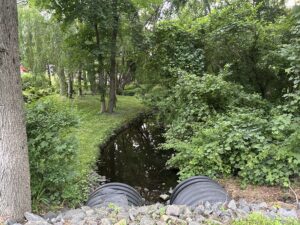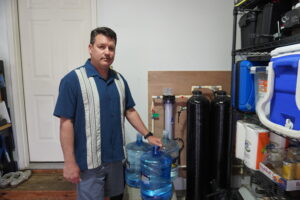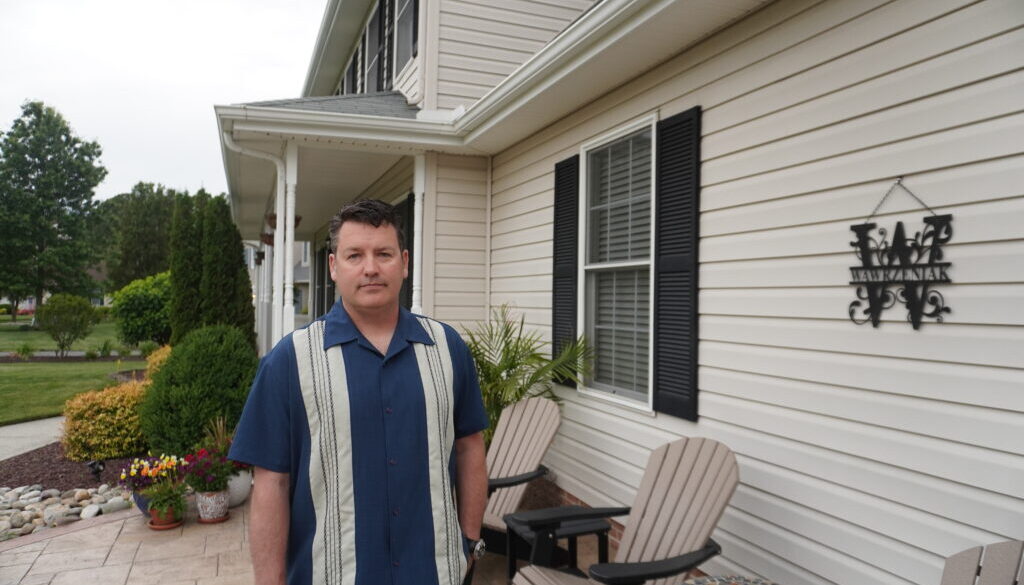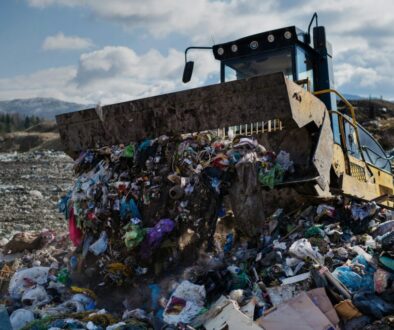Maryland residents search for answers as community struggles to overcome PFAS contamination
(UPDATED with additional Perdue statements at end of story.)
Rick Wawrzeniak is tired of worrying about “forever chemicals.”
Since 2004, the 51-year-old has lived in a comfortable suburb of Salisbury, a city of about 33,000 people in Maryland’s Eastern Shore region, in the house where he and his wife raised their two sons. Wawrzeniak works as a police officer and recently completed a three-year stint as president of the neighborhood homeowners’ association.
Long before testing alerted residents to alarmingly high levels of toxic per- and polyfluoroalkyl substances (PFAS) in their well water, Wawrzeniak thought something might be wrong. He had been in such good physical condition that he regularly competed in cycling events, but about eight years ago something changed.

“I started to develop mysterious gut issues,” said Wawrzeniak. “Forty-five minutes into a ride I would get stabbing pains in my gut. [My doctor] could never really pinpoint it and nothing really helped.”
He developed bouts of crippling fatigue, and, despite a healthy lifestyle, his doctor suggested he may have developed non-alcoholic fatty liver disease.
Meanwhile, Wawrzeniak’s teenage son started suffering from almost daily occurrences of hives, Wawrzeniak said.
“The doctors really can’t explain it,” he said. “They pretty much expect that it’s environmental, whatever it is.”
But Wawrzeniak and other area residents believe they know where the blame for their health problems lies – in the high levels of PFAS in their water.
PFAS are a group of synthetic chemicals that are also known as forever chemicals because they linger in water, soil and the bodies of humans and animals, and are considered to be pervasive globally. Many types of PFAS have been linked to health problems, including to both non-alcoholic fatty liver disease and chronic hives, along with certain cancers and a variety of other medical issues.
Last year, Wawrzeniak joined in a class action lawsuit filed against Perdue Agribusiness on behalf of over 400 residents, alleging PFAS contamination of their water originated from Perdue’s local soybean plant and that the company failed to warn residents in a timely manner that the toxic chemicals might be contaminating their water.
The company showed “reckless indifference to the health and safety of the public,” according to the complaint.

This spring, plaintiffs’ lawyers escalated the challenge to Perdue, threatening additional litigation and demanding that the plant immediately stop releasing PFAS into drinking and groundwater.
They allege the company is discharging contaminated wastewater into Peggy Branch, a small stream that runs from the Perdue plant through Wawrzeniak’s neighborhood, and that Perdue has sprayed PFAS-contaminated wastewater on about 40 acres of local crop land and 25 acres of forest. PFAS chemicals are leaching from waste stored in lagoons at the plant, the plaintiffs’ lawyers say.
“We feel like we’re victims”
The lawsuit against Perdue came after the Maryland Department of the Environment (MDE) designated Perdue a “responsible person” for the contamination. In a September 2024 letter, MDE stated that well and surface water sampling data west of the plant are “suggestive of a regional PFAS contamination plume” that traces to the local Perdue facility.
The lawsuit calls for Perdue to pay to clean up local PFAS contamination and provide medical monitoring for residents who were exposed to the chemicals, since health problems can appear years after exposure to PFAS.
Despite the official designation from MDE, Perdue has yet to publicly accept responsibility, saying it is working with state officials to investigate “all possibilities, including other potential sources” for the contamination.
“The source of the PFAS in the groundwater at our Perdue AgriBusiness facility has not been determined,” the company states on its website.
Perdue has twice called for the US District Court of Maryland to dismiss the class action case, most recently in February, when the company alleged that plaintiffs “raced to the courthouse without sufficient facts.”
Still, Perdue has been providing residents with water filtration systems and bottled water and has put together a plan for further PFAS testing at specific contaminated areas around its facility. The company says that it is working with state officials “to ensure continued protection of the community and environment.”
As of June 9, the company had completed testing at 666 residential properties and had installed 389 water treatment systems at affected homes, with 53 installations still pending and more being scheduled, Perdue said.

Despite Perdue’s efforts, concerns about the impact of PFAS contamination persist. Residents say they still fear PFAS-related health problems from past exposures, impacts on home values and future water treatment expenses.
“We feel like we’re victims and yet there’s nothing we can do about it,” said Dave Freese, who lives down the street from Wawrzeniak in the house he and his wife bought 26 years ago. “When I think of Perdue now, I don’t have anything good to say about them. It’s all about money. I don’t think they really care about us, I really don’t.”
City administrators did not respond to requests for comment.
Investigating the contamination
Perdue Farms, the parent company of Perdue Agribusiness with facilities across the US, was founded in the community 105 years ago, and the town is dotted with signs and buildings that carry the Perdue name. The local baseball stadium, Salisbury University’s business school and a new youth career development center all commemorate the company and its founder, Arthur Perdue.

Perdue Agribusiness allegedly knew as early as August 2023 that its wastewater was tainted with PFAS chemicals, when tests taken by MDE revealed high levels at the plant, but no one warned residents for over a year, with Perdue sending letters notifying them of the contamination in November 2024.
A table summarizing Perdue’s private well sampling program, dated October 2024, shows that nine properties where private wells were tested all were contaminated with PFAS levels above the federal drinking water thresholds for either perfluorooctane sulfonate (PFOS ) or perfluorooctanoic acid (PFOA), or both. Six additionally showed high levels of perfluorohexane sulfonate (PFHxS), one of the chemicals for which the EPA plans to roll back limits set under Biden.
Notably, testing showed that in one sample, even water that had already been treated still showed elevated levels of PFOS and PFOA, though they were only slightly above the federal limits. It was not clear what kind of treatment had been applied to the sampled well at that time or if that treatment was designed to remove PFAS, said MDE.
PFOA and PFOS have both been linked to cancer by an international cancer research group and PFHxS is linked to health problems including liver damage and thyroid issues.
“As heavily invested in the community as they are, I would have liked to see them clue us in,” said Wawrzeniak. “The fact that they let it go as long as they did and just waited until the state stepped in … I felt let down by that.”
It remains unclear how PFAS chemicals ended up in the soybean facility, although farmers across the country are increasingly struggling with PFAS contaminating their crops through soil sludge spread as fertilizer.

In January, Langan Engineering and Environmental Services, a consultant investigating the contamination on behalf of Perdue, identified eight “areas of interest” around the Perdue facility where PFAS chemicals are present. The report also points to a farm field and forest where wastewater from the facility was sprayed before 2024.
PFAS have been found in a fire suppression system, stockpiled soil from construction projects, Perdue’s wastewater treatment system, an outfall where wastewater flows into the Peggy Branch stream and onsite groundwater where PFOS levels as high as 1,370 parts per trillion (ppt) and PFOA levels up to 159 ppt have previously been detected. The federal drinking water limits for both chemicals are only four ppt.
Langan is collecting soil and water samples from the identified areas to better understand the extent of the contamination at the soybean facility and to help guide future cleanup efforts, according to Perdue.
Salisbury resident Taylor Swanson, who also leads an environmental nonprofit called the Assateague Coastal Trust, said he is working with a Salisbury city advisory committee to develop a plan to help “fill in the gaps” about the extent of PFAS contamination in the area.
“There’s a pretty good deep dive right now happening on what’s going on in our drinking water,” said Swanson said. “I would like to know a lot more about what’s going on in the rivers and creeks that surround that area.”
Noah Bressman, a professor at Salisbury University who studies fish biology and participates in the city advisory committee, said he worries about elevated PFAS levels in fish caught from local waterways.
“I just want to get more answers to learn how safe our local environment is,” he said.
Searching for answers
Not everyone affected by the contamination in Salisbury is alarmed.

“My parents and I didn’t panic at all because they’ve lived here 22 years,” said James Zimmer, a retired teacher who has moved to Salisbury a little less than four years ago to care for his parents, both in their early 90s. “It has not killed them. They haven’t had cancer or anything.”
But many share Wawrzeniak’s concerns that their families’ health has been permanently jeopardized from drinking the tainted water, including Freese.
“Right now, [our children are] healthy and we’re healthy,” said Freese, who lives next door to Zimmer and whose well sits about 50 feet from Peggy Branch. “In the back of your mind you’re thinking about this … PFAS is not one of those contaminants that goes away with time, it stays in your system.”
Wawrzeniak said he first learned about the contamination crisis last fall through a neighborhood social media group where residents shared their water testing results.
Soon after, tests of his own well water revealed four PFAS chemicals, including levels of PFOS more than 37 times the drinking water limit set by the EPA last spring and PFHxS at over 13 times the limit. The test also detected perfluorooctanoic acid PFOA above the EPA’s drinking water limit, as well as perfluorobutanesulfonic acid (PFBS).
Suddenly, Wawrzeniak had a possible explanation for his family’s health problems. Soon after, he realized many others in the area were also facing medical struggles that might be linked to PFAS exposure.
“I’ve got a neighbor across the street recently diagnosed with cancer,” said Wawrzeniak, adding that others throughout the neighborhood had developed cancer in recent years. “I’ve got other neighbors who are otherwise young, in their 30s, who are developing liver issues. It’s mind-blowing. We’re searching for answers.”

Like many of his neighbors, Wawrzeniak’s home has been outfitted with a filtration system that removes PFAS from his well water before it reaches his faucets.
Even with the filter in place, Wawrzeniak says he and his family no longer drink their well water, although they do use it to shower.
“I still don’t really trust it,” he said.
Wawrzeniak said he is additionally concerned about having to maintain the water filtration system. Perdue has pledged to cover the costs of upkeep only through 2029.
“I don’t think that should be my responsibility. That wasn’t any fault of mine,” he said.
Perdue said it “understands residents’ concerns regarding ongoing maintenance,” and will “ensure ongoing water safety.”
Despite the company promises, Wawrzeniak said he and other Salisbury residents are resigned to the reality that Perdue’s filters offer only a temporary solution.
“I would like to have this put behind us and to be able to resume normal living without having to worry about if my water’s tainted, are people not going to want to buy my house if the water’s tainted, and are my kids okay,” he said. “I would hate for it to ruin the community.”
(UPDATE: After publication, Perdue provided The New Lede with a statement touching on several points in the story. The following is a summary of the Perdue statement:
* “It’s important to note that residential well water testing is, in fact, 100% complete and PFAS treatment systems have been installed at 95% of impacted properties. Furthermore, Perdue AgriBusiness is now focusing on making updates at our Zion Church Road facility to remove potential PFAS sources. We are currently in the process of installing a comprehensive outflow PFAS treatment system as well as a new, PFAS-free fire suppression system.”
* Perdue said that it was “simply not the case” to say that it has not publicly accepted responsibility. “Perdue AgriBusiness accepted responsibility after being designated as the “responsible person” by the Maryland Department of Environment (MDE); we launched an extensive PFAS testing, treatment and remediation program that prioritizes transparency, accountability and community safety. In fact, the use of bottled water provided to homeowners by Perdue has already decreased by 13% (83 fewer homeowners). We understand and accept that test results revealed the presence of PFAS in the groundwater at our facility and are still investigating the source of the PFAS. Investigating the source of the contamination is distinct from the obligation we are fulfilling to identify and treat instances of PFAS at properties around the facility.”
* Perdue said that it has filed just one motion to dismiss the lawsuit against it in US District Court of Maryland and “has not slowed down our efforts to ensure safe drinking water for our community and neighbors.”
* “MDE notified Perdue in August 2023 that they were requesting testing as part of a state-wide PFAS testing program. Results from that testing were received in October 2023, and at that time there was no indication that PFAS had spread beyond the facility. Following the lead of MDE after additional results indicated that further testing and remediation was necessary, Perdue promptly notified residents and launched an extensive well-water testing and treatment program in September 2024. Throughout this effort, we have worked with MDE to follow the data in an iterative, science-based process that prioritizes the health and safety of our neighbors.”
(Featured image: Rick Wawrzeniak at his home in Salisbury, Maryland. Photo by Shannon Kelleher/The New Lede.)





June 23, 2025 @ 9:05 am
since the EPA failed to ban such toxins, where is the Maryland Legislature? They can ban such chemicals for the entire state.
What are they doing about this? (and how many of them take political donations from Perdue?)
This is totally fixable – but requires the Governor to stop his PR efforts long enough to lobby for the legislature to FIX THIS.
June 22, 2025 @ 2:44 pm
I believe a similar situation is taking place in Lake County, Ohio. My recent studies of all local fresh waters containing high amounts of PFAS was a concerning shock to me, but I can’t pinpoint a source in the area.